Syrian President Bashar al-Assad has hailed his troops' victory over the so-called Islamic State group in the ancient oasis city of Palmyra as an "important achievement."
The loss of Palmyra represents one of the biggest setbacks for the ultra-hard line Islamist group since it declared a caliphate in 2014 across large parts of Syria and Iraq.
The army general command said that its forces took over the city with support from Russian and Syrian air strikes, opening up the huge expanse of desert leading east to the Islamic State strongholds of Raqqa and Deir al-Zor.
Palmyra would become "a launchpad to expand military operations" against the group in those two provinces, it said, promising to "tighten the noose on the terrorist group and cut supply routes ... ahead of their complete recapture".
Mr Assad, meanwhile, said the recapture of Palmyra was "an important achievement and fresh proof of the efficiency of the Syrian army and its allies in fighting terrorism" during a meeting with French parliamentarians in Damascus.
He also hit out at the global coalition striking IS in Syria and Iraq, saying his army's victory "shows the coalition - led by the US and including more than 60 countries - isn't serious about fighting terrorism".
Amaq, a news agency close to Islamic State, said its fighters launched a twin suicide attack against government forces in west Palmyra, without giving details.
Syrian state-run television broadcast from inside the city, showing empty streets and badly damaged buildings.
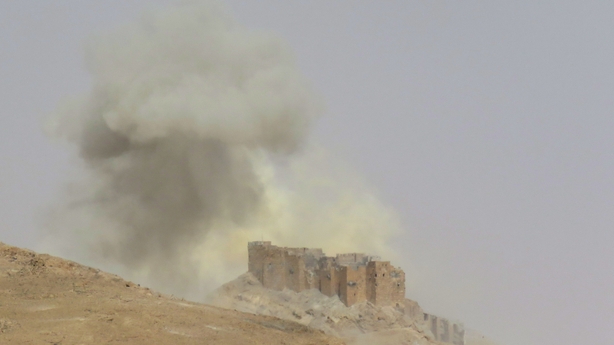
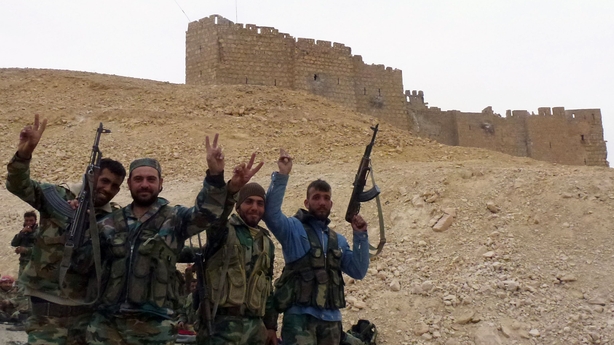
It quoted a military source saying Syrian and Russian jets were targeting Islamic State fighters as they fled, hitting dozens of vehicles on the roads leading east from the city.
Russia's intervention in September turned the tide of Syria's five-year conflict in the government's favour.
Despite its declared withdrawal of most military forces two weeks ago, Russian jets and helicopters carried out dozens of strikes daily over Palmyra as the army pushed into the city.
The loss of Palmyra comes three months after Islamic State fighters were driven out of the city of Ramadi in neighbouring Iraq, the first major victory for Iraq's army since it collapsed in the face of an assault by the militants in June 2014.
Islamic State has lost ground elsewhere, including the Iraqi city of Tikrit last year and the Syrian town of al-Shadadi in February.
The United States said the fall of Shadadi was part of efforts to cut Islamic State's links between its two main power centres of Mosul in Iraq and Raqqa in Syria.
Two days ago the United States said it believed it had killed several senior Islamic State militants, including Abd ar-Rahmanal-Qaduli, described as the group's top finance official and aide to its leader, Abu Bakr al-Baghdadi.
Islamic State and al Qaeda's Syrian branch the Nusra Front are excluded from a month-long cessation of hostilities in Syria that has brought a relative lull in fighting between the government and rebels battling Assad in the west of the country.
The limited truce has allowed indirect peace talks to resume at the United Nations in Geneva, sponsored by Washington and Moscow.
But progress has been slow, with the government and its opponents deeply divided over any political transition, particularly whether Mr Assad must leave power.
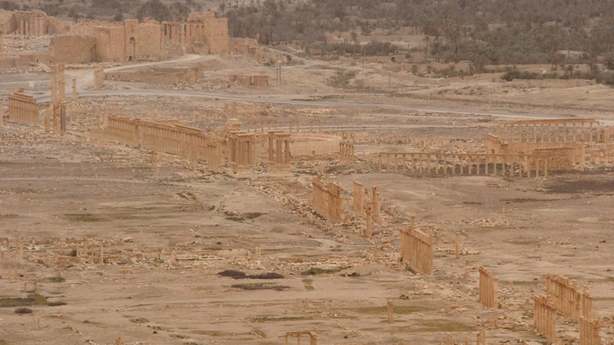

The Syrian Observatory for Human Rights said around 180 government soldiers and allied fighters were killed in the campaign to retake Palmyra, which is home to some of the most extensive ruins of the Roman empire.
Islamic State militants dynamited several monuments last year, and Syrian television broadcast footage from inside Palmyra museum showing toppled and damaged statues, as well as several smashed display cases.
Palmyra ruins generally 'in good shape': Syria antiquities chief
Ancient artefacts in the city are in much better shape than expected, Syria's Antiquities director Maamoun Abdulkarim has said.
He said much of the old city was intact and his department would try to restore relics destroyed during the jihadists' nearly year-long rule over the city.
"We were expecting the worst. But the landscape, in general, is in good shape," he said.
"We could have completely lost Palmyra," said Mr Abdulkarim.
Known to Syrians as the "Pearl of the Desert", Palmyra is a well-preserved oasis and boasts colonnaded alleys, elaborately decorated tombs and ancient Greco-Roman ruins.
Since it overran the city in May 2015, IS destroyed the grand Temple of Bel, the shrine of Baal Shamin (pictured below), and several funerary towers, which the ultraconservative Sunni Muslim extremists see as blasphemous.
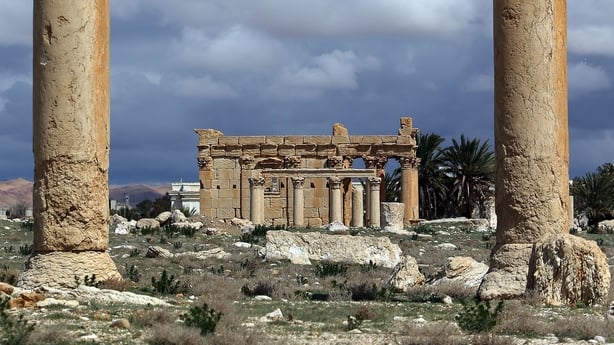
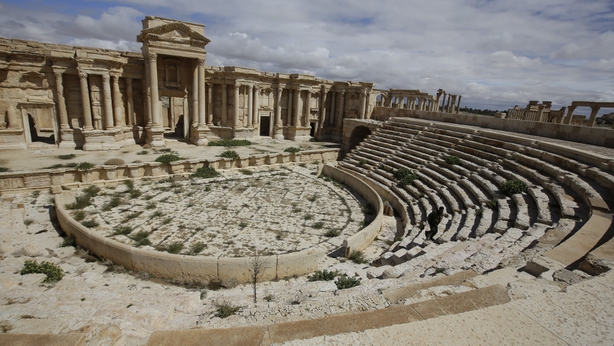
The jihadists used the city's spectacular Roman theatre (above) for executions and murdered the 82-year-old former antiquities chief of Palmyra.
Many of the most important ruins, including the Agora, Roman theatre, and city walls, were only lightly damaged, Mr Abdulkarim added.

